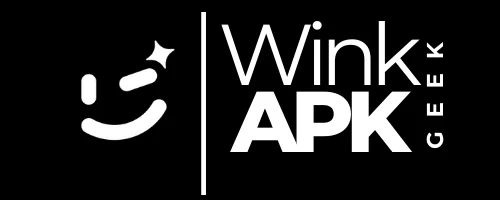Matching Welding Wire Types to Their Functions in Modern Construction

Introduction
Selecting the appropriate * ลวดเชื่อม *-https://www.udo.co.th/category_product/กลุ่มลวดเชื่อม/เชื่อมเหล็กหล่อ/เชื่อมอาร์กอน%20(TIG) when it comes to building sturdy, enduring and accurate welds is one of the mandatory aspects for modern construction work. Welding has been a core capability for producing panels, frames, piping, and a multitude of architectural elements. However, all welding wires are not created equally—each wire is designed for special applications and operates under a variety of conditions. Knowing the proper welding wire types to use in order to match the design of your welding and the finish of the metals can literally be the difference between life and death on the job for your construction crew.
Reason to Choose the Right Welding Wire
In building, welding jobs usually need heavy materials which include steel, stainless steel, and aluminium. Effective welding rod: The proper ลวดเชื่อม makes sure that your weld point is able to withstand the structural pressure, environmental factors and design requirements. Wrong wire choice can lead to weak welds, excessive spatter and puddles that are out of control. Thus, knowing different types of welding wire and application becomes necessary for both quality and efficiency purposes.
Kinds of Welding Wires and Uses
1. Solid MIG Welding Wire (GMAW)
Solid MIG wire is common in the construction industry because of its smooth finishing when in use, as well as because it has widespread arc stability. It’s perfect for welding mild and low-alloy steel parts in garages and shops. For general mild steel construction or production fabrication in the shop, these ลวดเชื่อม give you a clean weld with limited spatter. But it does need shielding gas (typically a mix of argon and CO₂) to keep the weld free from contaminants.
2. Flux-Cored Wire (FCAW)
Flux-cored wire is an ideal option for outdoor projects or when working with wind. This solder wire has a flux core inside that is a built in soldering flux that will protect the weld, no further soldering flux is required. It is particularly good for heavy-gauge materials, i.e. bridge, high-rise, and thick steel sections that require deep penetration. Flux-cored wires are ideal for out of position work and are more forgiving when working over scale on less than a clean plate.
3. Submerged Arc Welding Wire (SAW)
Submerged arc welding is frequently used with thick steel plates in large construction projects, such as bridges, ships, and heavy equipment. This process operates with granular flux to protect the weldment, delivering quality welding and high deposition rates. Wire The *ลวดเชื่อม * in SAW ( Submerged Arc Weld) is an unfilled wire which provides deep weld penetration and is often used for welding thick sections of mild steel and low alloy steel, and it’s well suited for heavy structural components and pressure vessels, storage tanks, transit carriages, cell adhesion, beams, etc.
4. Stainless Steel Welding Wire
Stainless steel is also used in commercial kitchens and food processing plants, as it can be steam-cleaned and sterilized and does not need paint or other surface finishes. For these applications, the appropriate stainless steel * ลวดเชื่อม * offers longevity and protection against corrosion. These wires are frequently alloyed with elements such as chromium and nickel in order to obtain the best performance in a difficult environment.
5. Aluminum Welding Wire
Light and corrosion resistant aluminum structures have been gaining popularity. Aluminum components for the roofing, curtain wall and decorative manufacturing in today’s modern buildings have become more and stronger, that is why aluminum ลวดเชื่อม is needed. Best results are obtained with Clean Surface and tight heat control.
Pointers to Use When Selecting Welding Wire to Carry Out Certain Functions
- Material Type: It is always recommended to match the wire material to the base metal; however. The wire material alone may not be suitable for all base metals.
- Welding Position: Some wires provide better performance depending on the position you weld in. This is particularly important if you are performing construction welds, typically done downhand; a vertical or overhead position.
- Environmental Requirements: For outdoor projects you will need either flux-cored or self-shielding wires to accommodate for the wind and other elements.
- Code Compliance: Contemporary construction meets or exceeds current welding standards. The correct *welding wire** guarantees compliance and safety.
Advantages of Right Choice of Wire
The benefits of using the correct welding wire for each purpose are manifold:
- Increased Structural Stress Resistance: Never worry about strips breaking under heavy load.
- Cost Savings: minimizes rework and material waste.
- Increased Safety: Reduces the potential for joint failure of critical assemblies.
- Increased Productivity: Maximizes welding speed and minimizes downtime.
Conclusion
Today, in the engineering and construction industry, welding is utilized to both connect and strengthen various metals to ensure that they are durable and reliable. The use of ลวดเชื่อม-https://www.udo.co.th/category_product/กลุ่มลวดเชื่อม/เชื่อมเหล็กหล่อ/เชื่อมอาร์กอน%20(TIG) is more than a question of technique it is, in fact, a buying decision that encompasses the entire quality level of a project. Matching the proper welding wire type to the requirements of the application will guarantee higher quality, and more productive performance, and offer more convenience to the industry’s professionals.
